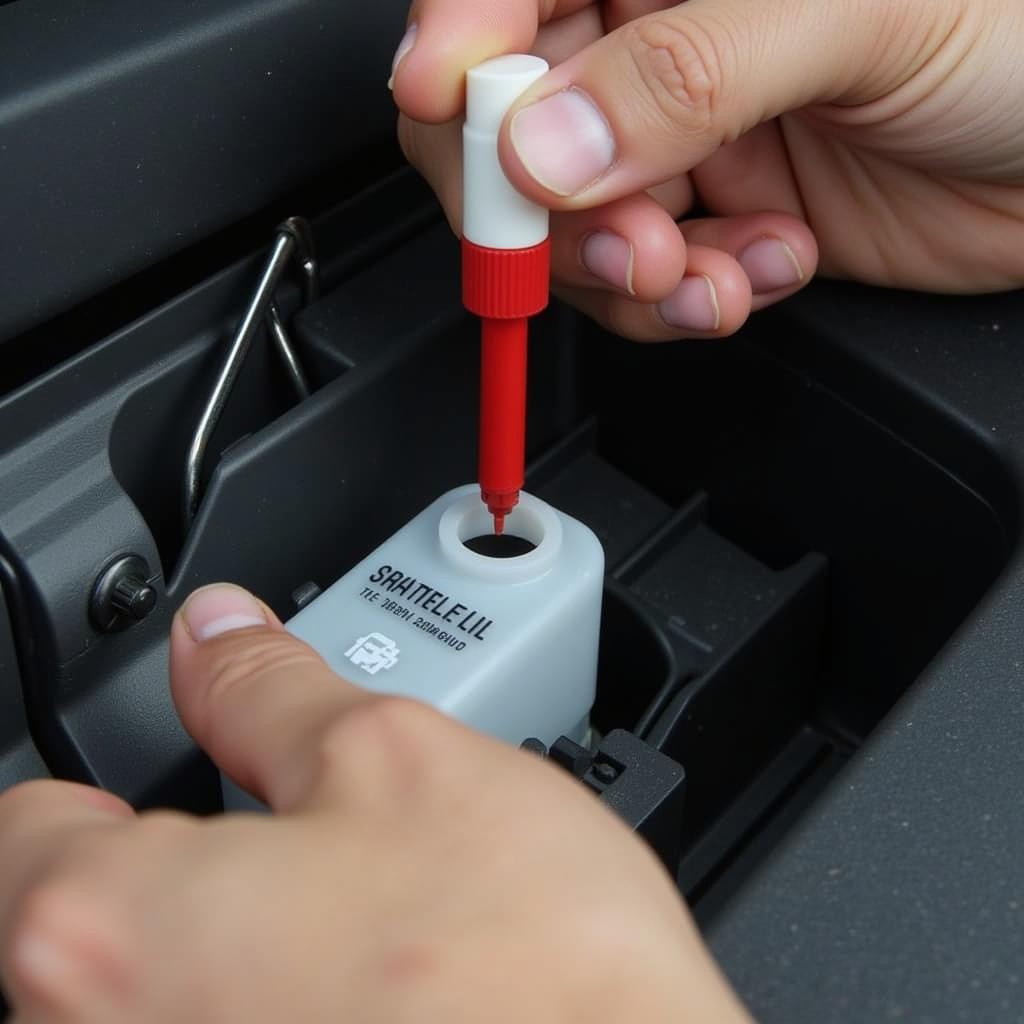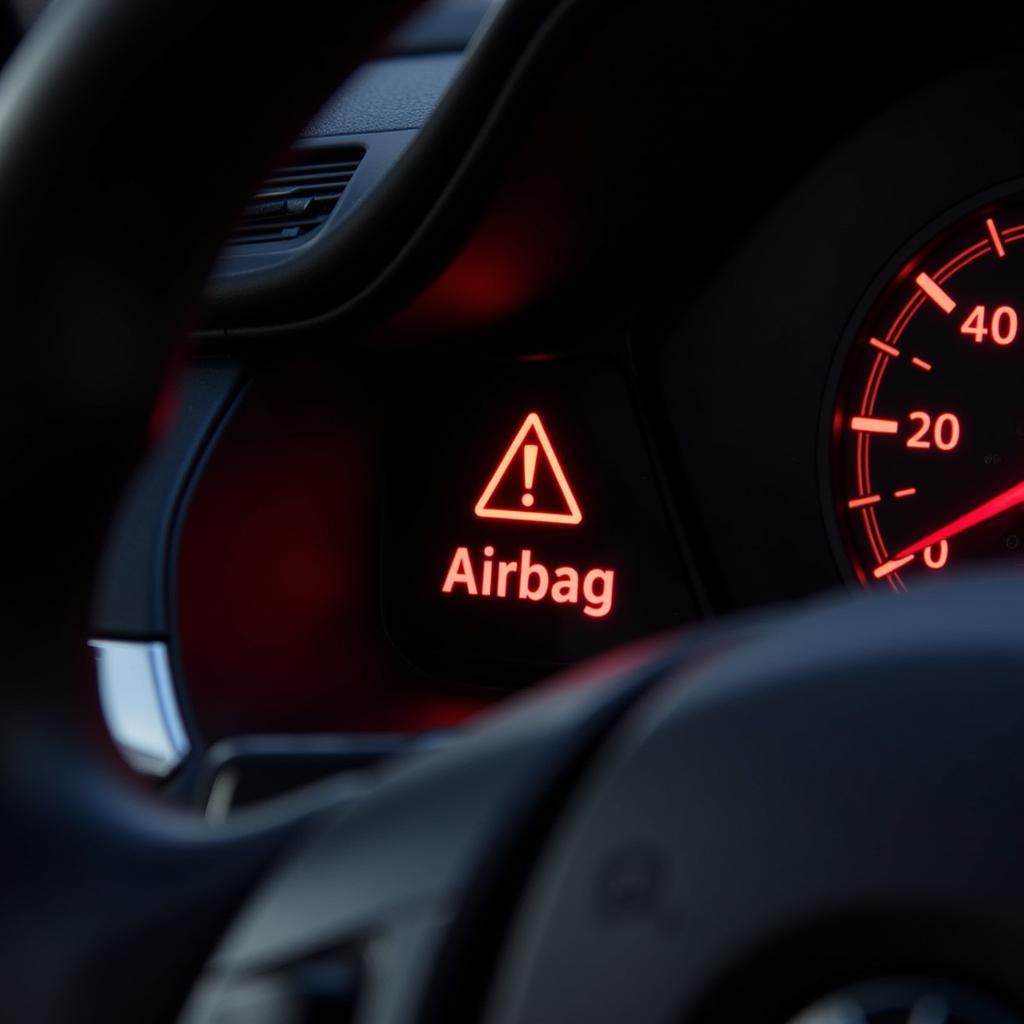If you’re driving a 2014 Nissan and your dashboard is flashing a parking brake warning light, it can be a head-scratcher. Is it a problem with the parking brake itself, or could it be the brake switch sending false signals? This comprehensive guide dives deep into the 2014 Nissan parking brake warning lamp switch vs. brake switch dilemma, providing you with the knowledge to diagnose and potentially fix the issue yourself.
Understanding the Warning Lights
Your 2014 Nissan utilizes a system of warning lights to communicate potential problems. The parking brake warning lamp, often a red exclamation mark within a circle, illuminates for two primary reasons:
- Engaged Parking Brake: This is the most common reason. If your parking brake is even slightly engaged, the light will show.
- Brake System Issue: A more serious scenario is when the light flickers or remains on even with the parking brake fully disengaged. This often points to a problem within the brake system itself, potentially with the brake fluid level or a faulty brake switch.
2014 Nissan Parking Brake Warning Lamp Switch: A Closer Look
The parking brake warning lamp switch is a small but crucial component. It’s typically located near the parking brake lever or pedal and acts as a sensor. When the parking brake is engaged, the switch closes, completing a circuit that illuminates the warning light. Conversely, disengaging the brake opens the circuit, turning off the light.
Brake Switch: The Unsung Hero of Braking
The brake switch, often called the brake light switch, is responsible for several functions, including:
- Activating Brake Lights: When you press the brake pedal, the switch activates, turning on the brake lights to alert other drivers.
- Disabling Cruise Control: For safety, the brake switch signals the cruise control system to disengage when the brake pedal is pressed.
- Signaling the Brake System: In some vehicles, the brake switch also communicates with the vehicle’s computer to indicate brake pedal application.
Could the Brake Switch Trigger the Parking Brake Warning?
While it may seem counterintuitive, a faulty brake switch can indeed trigger the parking brake warning light on your 2014 Nissan. Here’s why:
- Electrical Malfunction: A short circuit or internal failure within the brake switch can disrupt electrical signals, potentially causing the parking brake warning light to illuminate erroneously.
- Improper Signal Transmission: If the brake switch fails to send the correct signal to the vehicle’s computer when the brake pedal is released, it might be misinterpreted as a parking brake issue.
Troubleshooting the 2014 Nissan Parking Brake Warning Light
Before rushing to a mechanic, here’s a step-by-step guide to troubleshoot the issue yourself:
- Check the Parking Brake: Start with the obvious. Ensure the parking brake is fully disengaged. Sometimes a slight bump or incomplete release can trigger the light.
- Inspect Brake Fluid: Park your Nissan on a level surface and open the hood. Locate the brake fluid reservoir (refer to your owner’s manual) and check the fluid level. If it’s low, add the appropriate brake fluid (DOT 3 or DOT 4, as specified in your manual).
- Visual Inspection of the Switches: Locate both the parking brake warning lamp switch and the brake switch (refer to your owner’s manual for locations). Visually inspect them for any signs of damage, corrosion, or loose connections.
- Testing the Switches (Advanced): If you’re comfortable with basic electrical work, you can use a multimeter to test the continuity of both switches. This will help determine if they’re functioning correctly. Caution: If you’re unsure about working with electrical components, consult a qualified mechanic.
 Checking Brake Fluid
Checking Brake Fluid
When to Consult a Professional
If troubleshooting doesn’t resolve the issue or you’re uncomfortable performing the checks, it’s essential to consult a qualified mechanic specializing in Nissan vehicles. They have the diagnostic tools and expertise to pinpoint the exact cause of the problem.
“A malfunctioning brake switch might seem like a minor inconvenience, but it can have serious safety implications,” advises John Miller, a seasoned Nissan mechanic with over 20 years of experience. “If you suspect a brake switch issue, it’s always best to err on the side of caution and have it inspected by a professional.”
Preventing Future Problems
Regular vehicle maintenance is crucial for preventing brake system issues. This includes:
- Routine Brake Inspections: Have your brakes inspected by a qualified mechanic at least once a year or as recommended in your Nissan’s maintenance schedule.
- Timely Brake Fluid Changes: Brake fluid absorbs moisture over time, which can reduce its effectiveness. Follow your owner’s manual for recommended brake fluid change intervals.
- Addressing Warning Lights Promptly: Never ignore dashboard warning lights, especially those related to your brakes.
Conclusion
Understanding the difference between the parking brake warning lamp switch and the brake switch in your 2014 Nissan can save you time, money, and potential headaches. By following the troubleshooting tips and practicing proactive car care, you can keep your Nissan running smoothly and, most importantly, safely.

